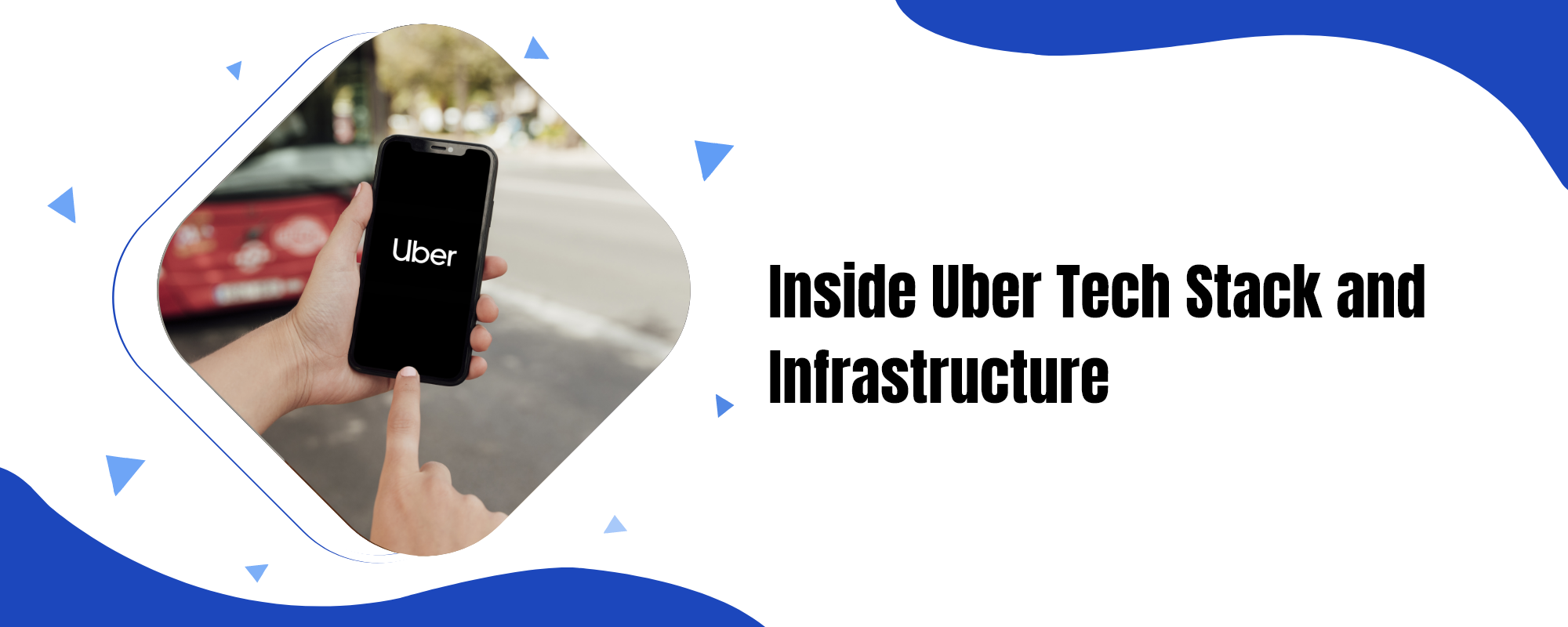As the leading ridesharing platform, Uber’s presence is felt across the globe, with millions of users accessing its services daily. The company’s success is built on a foundation of robust and innovative technology, which forms the backbone of its operations. This article aims to explore the Uber tech stack, shedding light on the tools, frameworks, and systems that have propelled the company to global prominence.
From its humble beginnings as an ambitious startup, Uber has grown exponentially, and as a result, its technology stack has evolved to support its ever-expanding user base and range of services. In this article, we will delve into the various components of Uber tech stack, including its programming languages, databases, cloud platforms, and more. By understanding the inner workings of Uber’s technology ecosystem, we’ll gain a deeper appreciation for the factors that have contributed to its unparalleled success and its ability to revolutionize the transportation industry.

Frontend technologies of Uber Tech Stack
Uber has revolutionized the transportation industry by seamlessly connecting riders with drivers using its innovative platform. The company’s success can be attributed to a robust and versatile tech stack that enables a user-friendly experience. In this section, we’ll explore the key frontend technologies that make Uber’s interface efficient, responsive, and visually appealing to millions of users worldwide.
React.js: Uber’s primary frontend library is React.js, a popular open-source JavaScript library developed by Facebook. React’s component-based architecture allows for the creation of reusable UI components, ensuring a consistent look and feel across the platform. This approach promotes maintainability and scalability, enabling Uber tech stack to accommodate its ever-growing user base effortlessly.
Redux: To manage the complex state of the application, Uber employs Redux JS, a predictable state container for JavaScript apps. Redux simplifies state management by providing a single source of truth for the application’s data, making it easier to understand and debug. This ensures that the app remains highly responsive, even when dealing with vast amounts of real-time data from riders and drivers.
Mapbox GL JS: Uber relies on Mapbox GL JS for its interactive maps, which are critical for the rider and driver experience. Mapbox is a powerful mapping library that allows for highly customizable and performant maps. It leverages WebGL, a JavaScript API for rendering 2D and 3D graphics, to provide smooth map interactions and animations, ensuring a seamless user experience.
Webpack: To optimize the performance of its web app, Uber tech stack uses Webpack, a popular module bundler that compiles and bundles JavaScript, HTML, CSS, and other assets. Webpack reduces the number of HTTP requests, minifies code, and eliminates dead code, resulting in faster page loads and a more efficient user experience.
Node.js: Although primarily a backend technology, Node.js plays a crucial role in Uber’s frontend build process. Uber uses Node.js to run server-side JavaScript code for its development environment and build tools. This streamlined approach to development helps maintain a consistent tech stack and fosters collaboration between frontend and backend teams.
Backend technologies of Uber Tech Stack
Uber’s backend tech stack is an essential part of its infrastructure, responsible for handling millions of requests and efficiently managing the complex logistics of ridesharing. Here’s a list and description of the key backend technologies that power Uber’s platform:
Python: At Uber, Python is the primary programming language for backend services. Python’s versatility and readability make it an ideal language for developing scalable applications. Uber uses Python for a variety of purposes, such as data processing, machine learning, and API development.
Node.js: Uber also employs Node.js for developing its backend services. Known for its non-blocking, event-driven architecture, Node.js enables Uber to handle a large number of simultaneous connections with low latency, making it well-suited for real-time applications.
Go: Go, also known as Golang, is another important language in the Uber tech stack. Go provides the performance benefits of a compiled language while retaining the ease of programming and garbage collection features of languages like Python. Uber uses Go for building high-performance services and systems, including its geofencing and surge pricing components.
Apache Cassandra: Uber relies on Apache Cassandra, a highly scalable and distributed NoSQL database, to store and manage its massive amounts of data. Cassandra provides Uber with high availability and fault tolerance, critical for the company’s real-time ride-hailing services.
Apache Kafka: As a distributed streaming platform, Apache Kafka is used by Uber for processing and managing real-time data. Kafka enables Uber to handle millions of events per second, allowing the seamless integration of various data sources, such as GPS locations, driver and rider statuses, and pricing information.
Docker: Uber leverages Docker, a containerization platform, to package and distribute its applications and services. Docker allows Uber to achieve consistent deployments and manage resources efficiently across its entire infrastructure.
Kubernetes: To orchestrate and manage its containerized services, Uber uses Kubernetes, an open-source container orchestration platform. Kubernetes provides Uber with the ability to automatically scale, deploy, and monitor its services, ensuring high availability and reliability.
gRPC: gRPC is a high-performance, open-source remote procedure call (RPC) framework used by Uber to facilitate communication between its microservices. gRPC enables Uber to build efficient and scalable services by utilizing HTTP/2 and protocol buffers for serialization.
Jaeger: Uber developed Jaeger, an open-source distributed tracing system, to monitor and troubleshoot its microservice architecture. Jaeger provides the Uber tech stack with insights into the performance of its services, helping to identify bottlenecks and optimize the platform.

Infrastructure technologies of Uber Tech Stack
The cloud infrastructure tech stack of Uber is a combination of various technologies and services that work together to ensure the seamless operation of its ridesharing platform. Uber’s cloud infrastructure relies on a hybrid cloud model, utilizing a mix of cloud providers and multiple active data centers.
This approach enables Uber to scale its services efficiently, accommodate massive amounts of data, and deliver low-latency responses to millions of users worldwide. The following is a detailed description of the various components that make up Uber’s cloud infrastructure tech stack:
Cloud Providers: Uber leverages multiple cloud providers to host and manage its services, ensuring high availability and resilience. By using multiple cloud providers, Uber can minimize the risk of downtime and maintain a robust infrastructure.
Storage: Apache Cassandra is a highly scalable, distributed, and fault-tolerant database management system employed by Uber to store and manage massive amounts of data. It allows Uber to efficiently handle read and write operations, ensuring low-latency responses for users.
Data Processing: Apache Kafka is a distributed streaming platform that enables Uber tech stack to process and manage real-time data. It allows the company to handle a large number of simultaneous connections and streamlines the processing of data generated by its platform.
Containerization: Docker is a lightweight containerization technology that enables Uber to package and distribute applications and services efficiently [2]. It simplifies the deployment and management of applications, making it easier to scale services and maintain a consistent environment across multiple cloud providers.
Orchestration: Kubernetes is a powerful container orchestration platform that automates the deployment, scaling, and management of containerized services. Uber uses Kubernetes to manage its containerized services across multiple cloud providers, ensuring efficient resource utilization and seamless service delivery.
Communication: gRPC is a modern, high-performance communication framework that facilitates communication between microservices. By using gRPC, Uber can ensure efficient and reliable communication across its distributed services, enhancing the overall performance of its platform.
Monitoring and Troubleshooting: Jaeger is a distributed tracing system that enables Uber to monitor and troubleshoot its platform. It provides valuable insights into the performance of services, helping Uber identify and resolve issues quickly.
Conclusion
Uber’s innovative and robust tech stack has played a pivotal role in its rise as a global ridesharing giant. By harnessing the power of cutting-edge technologies like Apache Cassandra, Apache Kafka, Docker, Kubernetes, gRPC, and Jaeger, Uber has built a highly scalable and resilient infrastructure capable of handling millions of users and processing vast amounts of data in real-time.
The hybrid cloud model of the Uber tech stack has also proven instrumental in ensuring high availability and seamless performance across its services. As the company continues to grow and evolve, its commitment to leveraging the latest technological advancements remains unwavering to enhance user experiences, maintain a competitive edge, and drive the ridesharing industry forward.










